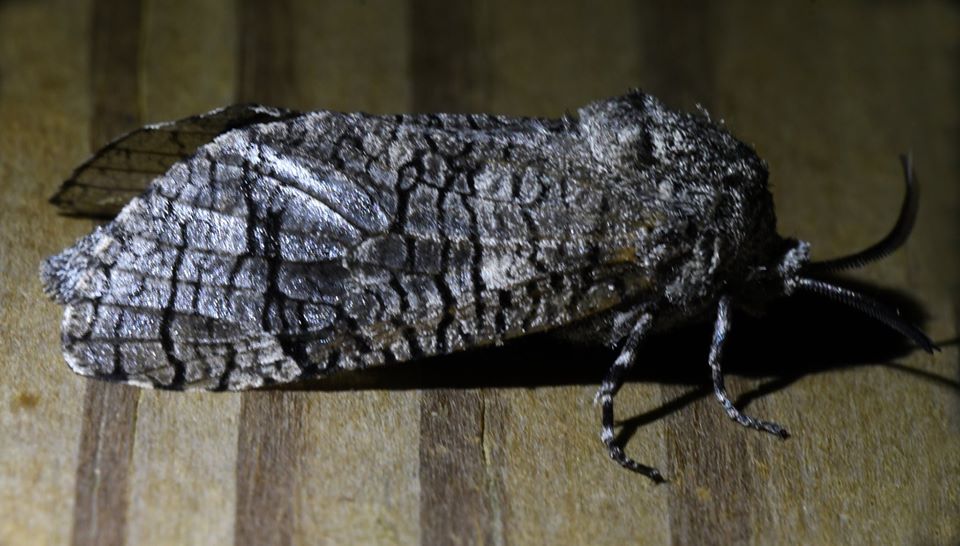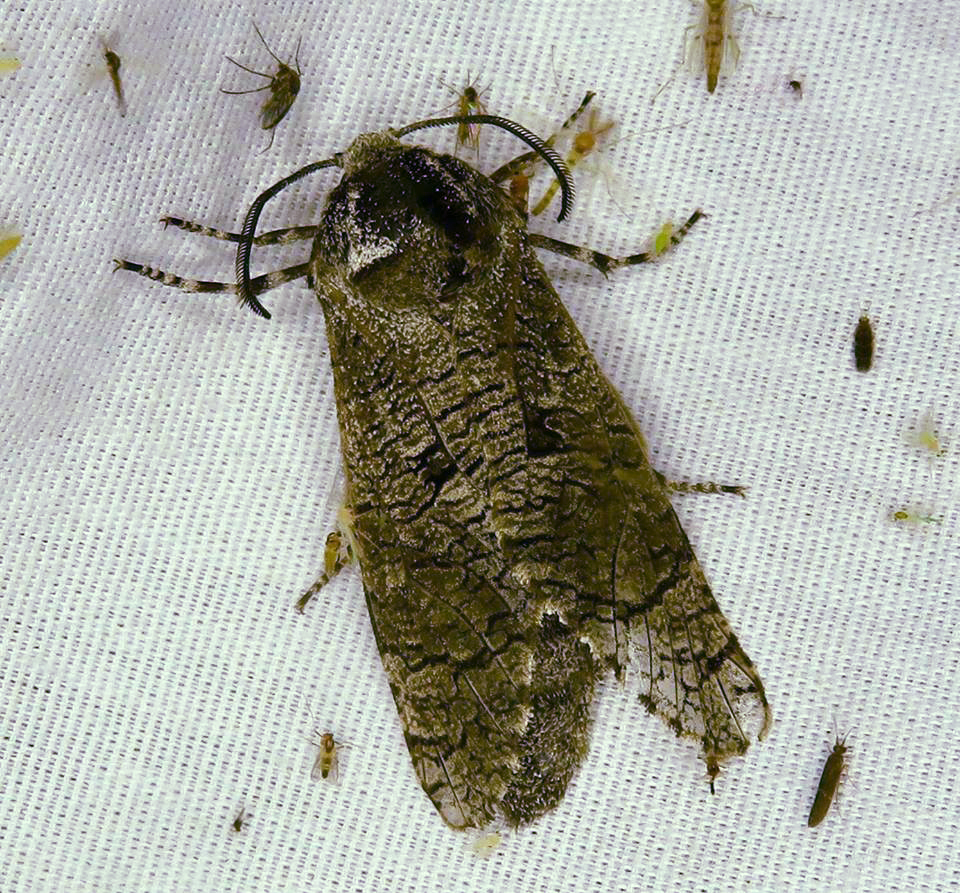ECOLOGY ▪ EDUCATION ▪ ADVOCACY
Prionoxystus: Combines the Greek words prion meaning “saw,” and xystus meaning “polished,” or “scraped.”
Macmurtrei: Although his specific connection is unclear, this species was probably named for American physician, historian, naturalist, and author Dr. Henry MacMurtrie (1793-1865). Dr. McMurtrie was renowned for his knowledge of geology, botany, and zoology.
Pry-ahn-oh-ZY-stus Mac-MUR-tree-eye
MacMurtrie's Goat Moth
This map shows the confirmed sightings of the Little Carpenterworm Moth in Indiana. All sightings were confirmed through photographic documentation by individuals who contributed to the Great American IN Nature Lepidoptera Project (GAIN LP).
 |
GAIN LP documented in county. |
| Date | County | Observer | Notes | Image1 | Image2 |
|---|---|---|---|---|---|
| 2020-05-16 | Brown | Pollock, Michele | Adult |
 |

|
| 2018-05-25 | Grant | Lara, Anthony | Adult |
 |

|
| Observation Details | Images |
|---|---|
| Date: 2020-05-16 County: Brown Observer: Pollock, Michele Notes: Adult |

 |
| Date: 2018-05-25 County: Grant Observer: Lara, Anthony Notes: Adult |

 |
Carpenterworm moths are among the largest of the "micro-moths." The larvae, which take approximately two years to mature, bore tunnels in the sapwood and heartwood of trees, which can impact the commercial quality of lumber.
Little Carpenterworm Moth caterpillars bore into the wood of their host species, creating tunnels. They will spend about two years in the sap and heartwood of the tree before emerging. Adults do not feed.
| Known Larval Food Sources in Indiana | ||
| Family | Taxonomic Name | Common Name |
|---|---|---|
| Order: Fagales | ||
| Fagaceae | Castanea dentata | American chestnut |
| Quercus spp. | oaks | |
| Order: Lamiales | ||
| Oleaceae | Fraxinus spp. | ashes |
| Order: Sapindales | ||
| Aceraceae | Acer spp. | maples |